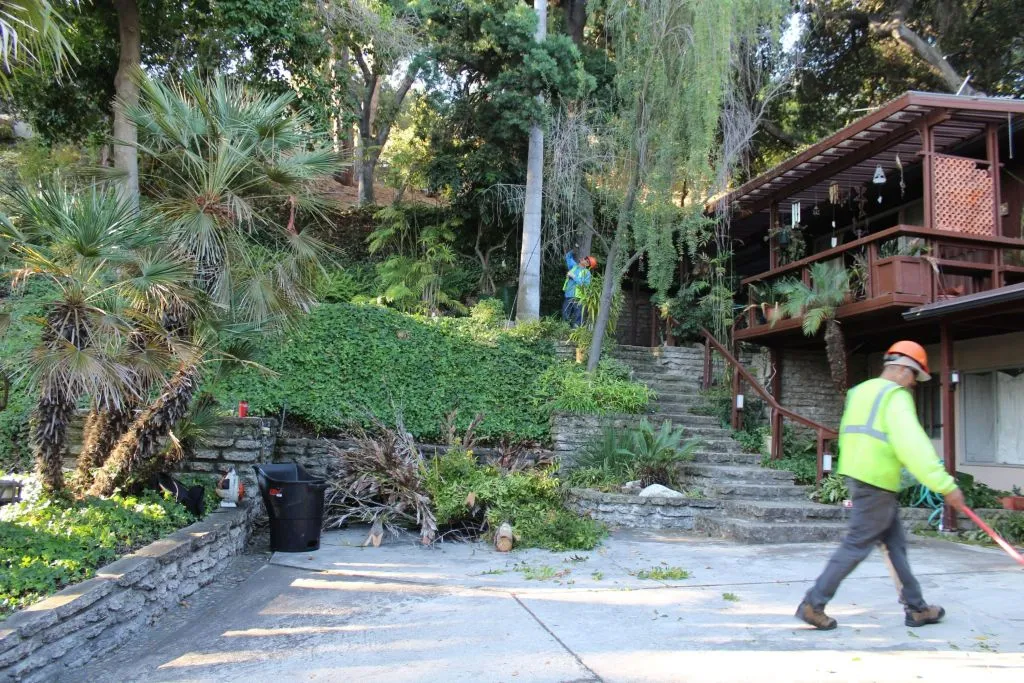The Environmental Impact of Land Clearing Explained
To prepare a piece of land for use in infrastructure projects, urban development, or agriculture, trees, plants, and other obstructions must be removed. To protect our planet's fragile ecosystems and biodiversity, it is essential to comprehend how land clearing affects the environment.
Definition of Land Clearing
Natural vegetation such as grasses, trees, and shrubs must be removed to make way for human habitation. It can be completed manually with equipment like chainsaws and machetes or with large equipment like excavators and bulldozers. ClearingClearing land might also involve removing rocks, debris, and other obstructions to make a level and sound surface to make a level and valuable surface.
Importance of Understanding its Environmental Impact
It is crucial to comprehend how land clearing affects the ecosystem for several reasons. Above all, it aids in evaluating the possible effects on nearby ecosystems, such as wildlife habitat loss, altered natural water cycles, and soil erosion. We may create plans to lessen negative consequences and advance sustainable land management techniques by being aware of these effects.
Furthermore, land removal can exacerbate climate change by releasing stored carbon dioxide into the atmosphere. When this carbon is cleaned, it releases its stored energy, which increases greenhouse gas emissions and global warming.
Land clearing is a widespread practice with significant environmental implications. By understanding its impact, we can work towards minimizing harm to ecosystems, preserving biodiversity, and mitigating climate change.
Types of Land Clearing
Land clearing encompasses various methods to remove vegetation and obstacles from land for different purposes. Understanding the different types of land clearing is essential for assessing their environmental impact and implementing sustainable practices.
1. Clear-cutting
Clear-cutting involves completely removing all trees and vegetation from a designated area. This method is commonly used in forestry to harvest timber quickly and efficiently. However, clear-cutting can lead to soil erosion, loss of habitat for wildlife, and disruption of ecosystems. Selective logging and reforestation efforts can mitigate the adverse effects of clear-cutting.
2. Slash-and-Burn Agriculture
Slash-and-burn agriculture, or swidden or shifting cultivation, is a traditional farming method used in tropical regions. It involves cutting down and burning vegetation to clear land for cultivation. While this technique can provide fertile soil for crops in the short term, it often leads to deforestation, soil degradation, and biodiversity loss.
3. Urban Development
Urban development involves clearing land for infrastructure, residential areas, and commercial establishments. This often requires the removal of trees, vegetation, and natural landscapes. While urban development is necessary to accommodate growing populations and economic activities, it can result in habitat loss, air and water pollution, and increased urban heat island effects.
4. Agriculture Expansion
Expansion of agriculture entails land clearing for plantation agriculture, farming, and livestock grazing. Deforestation, habitat damage, and biodiversity loss may result from this. Agroforestry, organic farming, and land use planning are examples of sustainable land management techniques that can assist in striking a balance between environmental preservation and agricultural output.
In summary, various land-clearing methods are employed for forestry, agriculture, and urban development. Understanding the environmental impact of these activities and implementing sustainable practices to minimize harm to ecosystems and biodiversity is essential.
Loss of Biodiversity
The diversity of species on Earth, or biodiversity, is crucial for preserving ecosystems and improving human welfare. However, many human actions, including land clearing, have drastically decreased biodiversity worldwide. Understanding the impacts of biodiversity loss is crucial for conservation initiatives and sustainable land management strategies.
1. Destruction of Habitats
Deforestation, urbanization, and increased agricultural practices are destroying natural ecosystems, one of the main drivers of biodiversity loss. Maintaining biodiversity and the proper operation of ecosystems depends on protecting and restoring habitats.
2. Displacement of Wildlife
Land clearing often results in the displacement of wildlife as their habitats are destroyed or fragmented. Displaced species may sometimes be forced into urban areas or agricultural lands, increasing the likelihood of human-wildlife conflicts and negative interactions. Implementing habitat corridors and protected areas can facilitate wildlife movement and reduce conflicts with human activities.
3. Impact on Endangered Species
The loss of biodiversity can have a catastrophic effect on threatened and endangered species. By decreasing the amount of habitat that is accessible and raising the possibility that endangered species may become extinct, land clearing exacerbates these concerns. Conservation initiatives, including habitat restoration, captive breeding programs, and protected areas, are essential to save endangered species and stop their extinction.
Ecosystems, wildlife, and human societies suffer greatly when biodiversity is lost due to land removal. By comprehending the consequences of biodiversity depletion and executing conservation strategies, we can endeavor to safeguard Earth's abundant biological legacy for posterity.

Soil Degradation
An essential natural resource, soil keeps life on Earth alive and promotes the growth of plants. However, several human actions, such as clearing land, can result in soil degradation, significantly affecting ecosystems, agriculture, and food security.
1. Erosion
Land clearing exposes soil to the erosive forces of wind and water, leading to soil erosion. When vegetation cover is removed, the soil becomes more vulnerable to erosion by rainfall and wind. Erosion also contributes to sedimentation in water bodies, leading to water pollution and habitat degradation.
2. Loss of Soil Fertility
Soil degradation often leads to a decline in soil fertility, making it less suitable for agriculture and plant growth. When soil is cleared and exposed to the elements, organic matter content decreases, and nutrient levels decline. As a result, crops may need help to obtain the nutrients they need to grow, leading to reduced yields and agricultural productivity.
3. Increased Risk of Desertification
Land clearing can also contribute to desertification, the process by which fertile land becomes degraded and becomes desert-like. When vegetation cover is removed, the soil becomes more susceptible to drought and erosion, losing soil moisture and nutrients. This can create barren landscapes incapable of supporting plant life, leading to desertification.
Agriculture, ecosystems, and human societies face severe difficulties due to soil degradation brought on by land removal. By comprehending the origins and outcomes of soil deterioration and implementing sustainable land management techniques, we can endeavor to maintain soil fertility and guarantee food security for upcoming generations.
Climate Change
The primary causes of these fluctuations are human activities like deforestation and the combustion of fossil fuels. Understanding the profound effects of climate change on ecosystems, economies, and civilizations worldwide is essential.
1. Release of Greenhouse GasesOne of the main contributors to climate change is the atmospheric production of gases, such as carbon dioxide, methane (CH4), and nitrous oxide (N2O). Warming is brought on by the greenhouse effect, which occurs when these gases absorb sunlight. Burning fossil fuels for energy, and industrial activities are human activities that contribute to the buildup of gases in the atmosphere, which causes climate change and global warming.
gases2. Deforestation and Carbon Sequestration
Deforestation decreases the Earth's ability to absorb carbon dioxide from the atmosphere, which leads to climate change. The greenhouse effect is exacerbated when forests are removed because the stored carbon is released back into the atmosphere.
3. Alteration of Local and Regional Climates
Climate change can also alter local and regional climates, including temperature, precipitation patterns, and extreme weather events. Rising global temperatures can disrupt ecosystems, water cycles, and agricultural systems, leading to biodiversity loss, water scarcity, and food insecurity.
Climate change is causing severe problems for ecosystems, economies, and communities worldwide. By being aware of its causes and effects, reducing greenhouse gas emissions, and adapting to changing conditions, we can work toward a more sustainable and resilient future for future generations.
Water Cycle Disruption
The water cycle, also known as the hydrological cycle, is a vital natural process regulating water distribution and circulation on Earth.
1. Changes in Hydrological Processes
Disruption of the water cycle can lead to changes in hydrological processes, including precipitation patterns, evaporation rates, and runoff dynamics. Deforestation, for example, reduces vegetation cover, increasing surface runoff and soil erosion. Urbanization can alter natural drainage patterns, changing groundwater recharge and aquifer depletion. These changes can disrupt ecosystems, water availability, and agricultural productivity.
2. Increased Risk of Flooding and Drought
Water cycle disruption can increase the frequency and severity of flooding and drought events. Changes in precipitation patterns and altered runoff dynamics can lead to more intense rainfall and flash floods in some regions. Conversely, decreased precipitation and increased evaporation rates can lead to prolonged droughts and water scarcity. These extreme weather events can devastate communities, ecosystems, and economies.
3. Impact on Water Quality
Disruption of the water cycle can also impact water quality by altering the transport and distribution of pollutants. Increased surface runoff from deforested areas can carry sediment, nutrients, and pollutants into water bodies, leading to eutrophication and contamination. Urbanization can contribute to runoff pollution from roads, rooftops, and industrial sites, further degrading water quality.
Water cycle disruption from human activities poses significant challenges for ecosystems, communities, and economies. By understanding the drivers and impacts of water cycle disruption and implementing sustainable water management practices, we can work towards preserving water resources and building resilience to climate change.
Air and Water Pollution
Air and water pollution are significant environmental concerns that arise from various human activities, including land clearing.
1. Release of Pollutants from Clearing Activities
Land clearing activities, such as deforestation and urbanization, can release pollutants into the air and water. Additionally, heavy machinery and equipment can release pollutants such as diesel exhaust and construction dust into the air.
2. Runoff of Sediment and Chemicals into Waterways
Land clearing can also lead to sediment, nutrients, and chemicals running into waterways, contaminating freshwater ecosystems. When vegetation cover is removed, the soil becomes more susceptible to erosion by rainfall and runoff, increasing sedimentation in rivers, lakes, and streams.
3. Impact on Human Health
Human health may be harmed by air and water pollution pollution brought on by land clearance operations. Breathing in air contaminants, such as harmful gases and delicate particulate matter, can worsen respiratory conditions, set off asthma episodes, and raise the risk of cardiovascular illnesses. Waterborne infections, including cholera, hepatitis, and diarrhea, can result from contaminated water sources, especially in areas without access to sanitary facilities or clean drinking water.
Conclusion
land clearing is a widespread practice with significant environmental consequences, including habitat destruction, biodiversity loss, soil erosion, and contribution to climate change. Understanding these impacts is crucial for promoting sustainable land management practices and preserving our planet's ecosystems for future generations.
Together, we can make a difference in protecting our land, wildlife, and natural resources for future generations. Let us take action today to build a more sustainable and resilient future for all.




